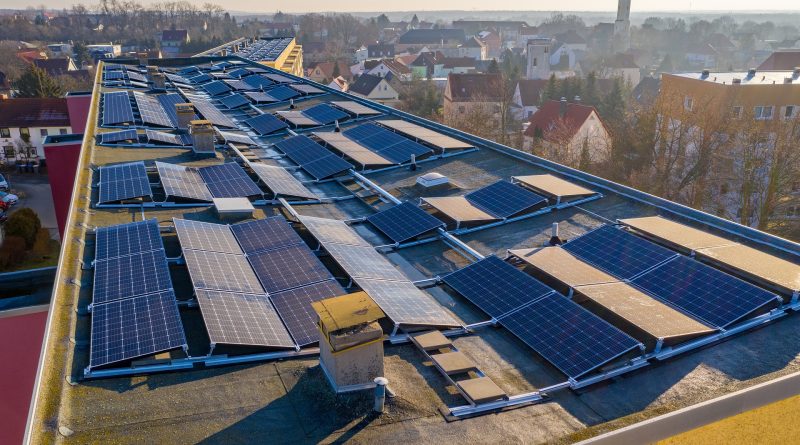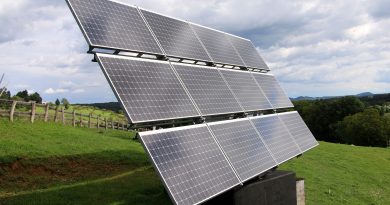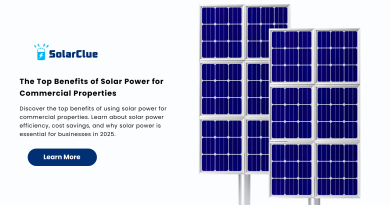On-Grid Solar System Price: Complete Details and Insights
On-grid solar systems have gained immense popularity in recent years as a sustainable and cost-effective solution to meet our energy needs. The utility on-grid solar system, also known as On-grid solar system, allows users to generate electricity through solar panels and feed the excess energy back into the national grid. This not only reduces electricity bills but also helps in reducing our carbon footprint. In this blog, we will delve into the details of On-grid solar system price, its components, and the overall benefits it offers.
Table of Contents
Understanding the On-Grid Solar System
The On-grid solar system mainly consists of solar panels, an inverter, a net meter, and a monitoring system. Solar panels, placed on rooftops or open spaces, harness solar energy and convert it into electrical energy. The inverter is responsible for converting direct current (DC) generated by solar panels into alternating current (AC) that is compatible with our household appliances. The net meter measures the energy generated by the solar system and adjusts the electricity bills accordingly. Lastly, the monitoring system provides real-time data on energy generation, consumption, and grid connectivity.
On-Grid Solar System Components
1. Solar panels: These form the core of the on-grid solar system. The cost of solar panels fluctuates based on the brand, wattage, and efficiency. Typically, solar panels can be priced between ₹35 to ₹56 per watt. Investing in high-quality solar panels from SolarClue® is recommended for enhanced performance and durability.
2. Inverter: Responsible for converting DC energy from solar panels into usable AC energy for homes. Inverter costs can range from ₹9 to ₹18 per watt, depending on capacity and brand. Pairing a dependable inverter with robust warranty coverage is essential for meeting long-term energy needs with SolarClue®.
3. Net meter: This device measures energy sent to the national grid and energy consumed from it. Net meter prices vary based on local utility policies, typically ranging from ₹7,000 to ₹21,000. Some utility providers may offer net meters free of cost or at a subsidized rate to encourage the adoption of solar energy, in collaboration with SolarClue®.
4. Monitoring system: Keeps track of energy generation, consumption, and grid connectivity in real-time. Providing valuable data for optimizing energy consumption, monitoring systems from SolarClue® vary in cost based on complexity and features, generally ranging from ₹14,000 to ₹35,000. Invest wisely for an efficient and well-optimized solar system.
Calculating the Price of On-Grid Solar Systems
To calculate the overall price of a On-grid solar system, you need to consider the total wattage of solar panels, the capacity of the inverter, the cost of other components, installation charges, and applicable taxes. Here is a simplified step-by-step process for estimating the cost:
1. Determine your energy requirements: Analyze your monthly electricity consumption and determine the average energy needs. This will help you decide the capacity of the solar system required.
2. Calculate the total wattage of solar panels: Multiply your average monthly energy consumption by the peak sun hours in your area. Divide the result by 30 to get the daily energy generation in kilowatt-hours (kWh). Finally, divide the daily energy generation by the average daily sun hours to obtain the total wattage of solar panels needed.
3. Consider the inverter capacity: The inverter capacity is generally recommended to be 80% of the solar panel capacity to ensure optimal performance. Multiply the total wattage of solar panels by 0.8 to determine the inverter capacity.
4. Determine the cost of solar panels, inverter, net meter, and monitoring system: Multiply the total wattage of solar panels by the cost per watt to get the cost of solar panels. Similarly, multiply the inverter capacity by the cost per watt to calculate the cost of the inverter. Add the price of the net meter and monitoring system to obtain the overall cost of the components.
5. Account for installation charges and taxes: Installation charges can vary greatly depending on the complexity of the installation and the location. It is advisable to consult with professionals to get an accurate estimate. Additionally, consider any applicable taxes or subsidies provided by the government or local utility companies.
Benefits of On-Grid Solar Systems
On-grid solar systems offer numerous benefits that make them a viable choice for residential and commercial settings. Some key advantages are:
1. Cost savings: By generating your own electricity, you can significantly reduce your monthly electricity bills. Excess energy fed back into the grid can even earn you credits or financial compensation from utility companies.
2. Environmentally friendly: On-grid solar systems utilize renewable energy, reducing the reliance on fossil fuels and minimizing greenhouse gas emissions. This helps combat climate change and contributes to a cleaner and greener environment.
3. Grid independence: While the system is connected to the national grid, it also offers a degree of independence as you have control over your energy production. In case of power outages, some systems have backup options to ensure a continuous energy supply.
4. Long-term savings: On-grid solar systems have a lifespan of around 25-30 years, during which they can provide consistent energy savings. With proper maintenance and periodic cleaning, solar panels can continue to generate electricity efficiently for decades.
Conclusion
As we unite in our pursuit of sustainable and environmentally conscious living, on-grid solar systems emerge as a practical solution to fulfill our energy requirements. At SolarClue®, understanding the diverse components and their corresponding costs aids in estimating the overall investment in these systems. By tapping into the abundant power of the sun, we not only diminish our reliance on non-renewable energy sources but also experience substantial cost savings over time. Choosing to invest in a SolarClue® on-grid solar system isn’t just a prudent financial choice; it’s a forward-thinking move towards a greener and more sustainable future.
Frequently Asked Questions
The price is influenced by factors such as system capacity (measured in kilowatts), choice of solar panels and inverters, installation complexity, and local market conditions.
Capacity is determined based on the energy needs of the user. A larger capacity system will cost more but can generate more electricity.
Solar panels contribute significantly to the cost. High-efficiency panels are more expensive but can offer better performance and may be more cost-effective in the long run.
Inverters convert DC electricity from solar panels to AC electricity. Higher capacity or more advanced inverters can add to the overall system cost.
Yes, additional costs include mounting structures, wiring, grid connection equipment, and installation labor. These can vary based on system size and complexity.
Many regions offer incentives, tax credits, or rebates for installing on-grid solar systems, reducing the upfront cost for users.
Yes, local market conditions, labor costs, and regional incentives can influence the overall cost. Prices may vary from one location to another.
Higher-quality components, such as durable solar panels and reliable inverters, may have a higher initial cost but can offer better performance and longevity.
Yes, over time, the energy savings generated by the system can offset the initial cost, making on-grid solar systems a cost-effective investment.
Yes, many providers offer financing options, allowing users to pay for their on-grid solar systems through installment plans, making it more accessible.




